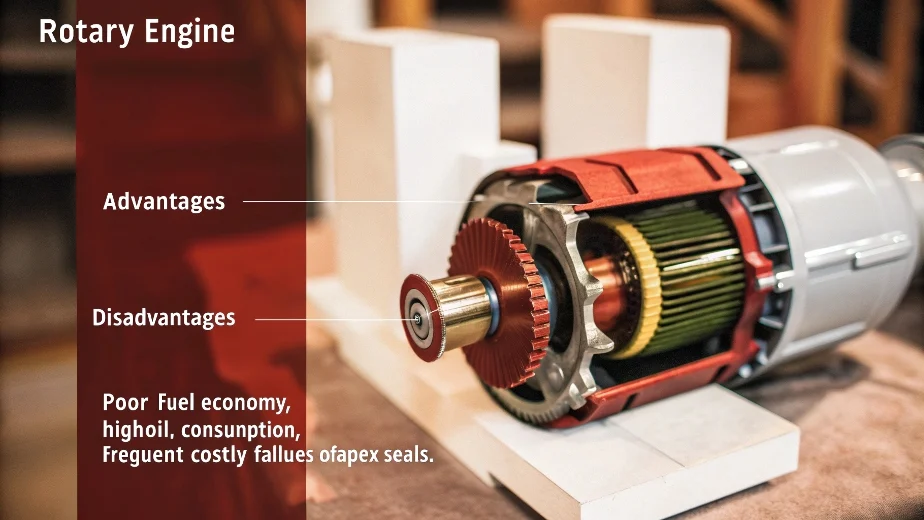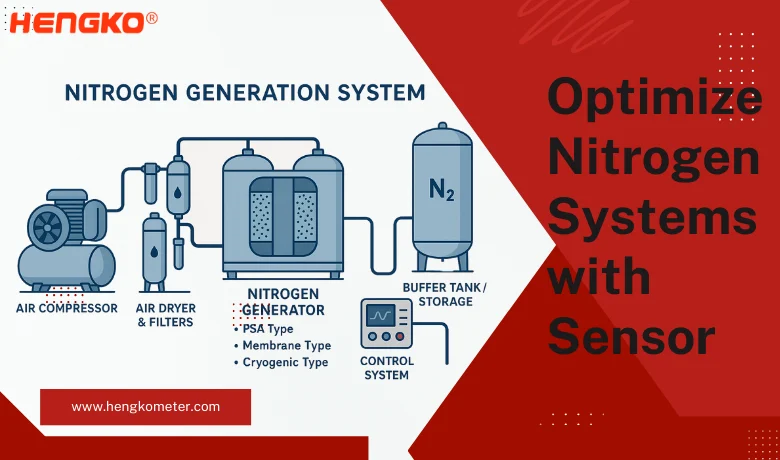You're fascinated by the rotary engine's power but hear terrible things about reliability. This leaves you wondering if it's a brilliant design or just a costly headache.
A rotary engine's key advantages are its high power-to-weight ratio, smoothness, and compact size. However, its main disadvantages are poor fuel economy, high oil consumption, and the frequent, costly failure of its apex seals, which limits its long-term durability and reliability.

The debate around rotary engines reminds me of a very niche technology I worked with years ago: sintered metal 3D forming. On paper, it was amazing. You could create complex, small parts with incredible design freedom. But when it came to mass production, it was full of problems. Controlling precision was tough, heat treatment caused warping, and material choices were limited. The rotary engine feels the same to me. It's an engineer's romance—compact, smooth, powerful. But it's not known for being reliable or durable. To really understand this engine, we need to dive into the specific problems and the incredible benefits that make people love it anyway.
What is the main problem with rotary engines?
Struggling to understand why such an innovative engine isn't more common? The main issue is a persistent, costly flaw that plagues owners and scares away potential buyers.
The single biggest problem with rotary engines is sealing. The apex seals at the tips of the rotor wear out quickly. This causes low compression, power loss, and high oil consumption, often requiring a complete engine rebuild much sooner than a conventional piston engine.
This central issue of sealing is the rotary engine's Achilles' heel. I remember a similar challenge with those sintered metal parts I mentioned. Their biggest flaw was porosity—tiny holes in the material that compromised strength. No matter how clever the design, you couldn't escape this fundamental material problem. The apex seals on a rotary are just like that. They are long, thin metal strips that have to seal a huge, oddly shaped combustion chamber. This shape is not ideal for an efficient, complete burn of the air-fuel mixture. As a result, the seals are exposed to intense, uneven heat and pressure.
The Apex Seal Challenge
The seals must scrape along the inside of the rotor housing, creating friction and wear. Unlike the piston rings in a conventional engine, which travel in a simple up-and-down motion, the apex seals follow a complex path. This makes consistent lubrication and sealing extremely difficult.
Combustion Inefficiency
The long, moving [combustion chamber](https://en.wikipedia.org/wiki/Combustion_chamber) also means the fuel doesn't burn as quickly or as completely as in a compact piston engine chamber. This unburnt fuel not only lowers efficiency but also washes away the oil film needed to lubricate the seals, accelerating their demise.
The long, moving [combustion chamber](https://en.wikipedia.org/wiki/Combustion_chamber) also means the fuel doesn't burn as quickly or as completely as in a compact piston engine chamber. This unburnt fuel not only lowers efficiency but also washes away the oil film needed to lubricate the seals, accelerating their demise.
| Factor | Challenge for Apex Seals |
|---|---|
| Combustion Shape | Long and narrow, leading to slow and incomplete fuel burn. |
| Heat Distribution | Intense, localized heat on one side of the housing warps components. |
| Lubrication | Difficult to maintain a consistent oil film across the entire surface. |
| Seal Movement | Complex motion creates high friction and uneven wear patterns. |
Why are rotary engines no longer used?
Wondering why car companies abandoned this smooth, powerful engine design? It's not just one reason, but a combination of factors that made it impractical for modern cars.
Rotary engines are largely discontinued due to their inability to meet modern emissions standards efficiently. Their inherent design leads to poor fuel economy and high hydrocarbon emissions. Combined with durability concerns and high ownership costs, they became uncompetitive against advanced piston engines.
The world of manufacturing moves on when a technology can't keep up with new demands. I saw this firsthand in the molding industry. Older, less efficient molding techniques were replaced by computer-controlled injection molding because the new methods offered better precision, less waste, and lower costs. The rotary engine faced a similar situation. While it was brilliant for its time, it struggled to adapt to modern requirements, especially regarding the environment and economy. The two biggest nails in its coffin were emissions and fuel efficiency. The same design flaw that hurts its seals—the long combustion chamber—also lets a lot of unburnt hydrocarbons escape into the exhaust. In today's emissions-focused world, that's a fatal flaw. At the same time, modern turbocharged piston engines started offering similar power in small packages, but with far better fuel economy and reliability, making the rotary's trade-offs much harder to justify for a mass-market car.
| 特徴 | Wankel Rotary Engine | Modern Turbo Piston Engine |
|---|---|---|
| Emissions | High (unburnt hydrocarbons) | Low (with modern catalytic converters) |
| Fuel Economy | Poor | Good to Excellent |
| 耐久性 | Low (seal wear) | High |
| Production Cost | High (specialized parts) | Low (mature technology) |
What is so good about rotary engines?
Heard all the bad things, but still curious about the rotary's legendary appeal? There are compelling reasons why enthusiasts and engineers still rave about this unique design.
The rotary engine's brilliance lies in its power density and smoothness. With far fewer moving parts, it's incredibly compact, lightweight, and balanced. This allows it to rev high with almost no vibration, delivering a uniquely responsive and exhilarating driving experience.
Despite its flaws, the rotary engine has a certain magic. It achieves a level of mechanical elegance that is rare. I once had a Japanese client who raced a modified Mazda RX-8. I asked him why he chose such a difficult engine. He told me frankly, "You don't buy a rotary to be practical. You buy it for the feeling. It's a belief." I finally understood. It’s for people who appreciate the engineering itself.
Power in a Small Package
The power-to-weight ratio is simply fantastic. A typical rotary engine can produce the same power as a piston engine twice its size and weight. This is a huge advantage in sports cars and racing, where weight is the enemy of performance. Less weight means better handling, braking, and acceleration.
Unmatched Smoothness
The engine's operation is purely rotational. The rotors spin smoothly in one direction, unlike pistons that violently stop and change direction thousands of times a minute. This results in an engine that is almost vibration-free. It pulls cleanly and eagerly all the way to its high redline, creating a sound and sensation that is completely addictive.
What is a key advantage of a rotary engine?
Are you looking for the one single detail that defines the rotary engine's genius? It all comes down to a fundamental design choice that eliminates massive complexity.
A key advantage is its mechanical simplicity. A basic single-rotor engine has only two main moving parts: the triangular rotor and the eccentric shaft it spins on. This is a stark contrast to a piston engine's dozens of moving parts.
In my line of work, simplifying a mold design is a huge win. Fewer moving parts means there are fewer things that can break, wear out, or be assembled incorrectly. The rotary engine takes this philosophy to the extreme. Think about a standard four-cylinder engine. You have four pistons, four connecting rods, multiple valves per cylinder, camshafts, valve springs, rockers, and a complex crankshaft. A simple rotary engine throws all of that away.
Fewer Parts, Not Fewer Problems
This design elegance is the core of its appeal. The energy from combustion is converted directly into rotation, which is a much more efficient transfer of motion. However, as we've discussed, this simplicity comes at a cost. The few parts it does have, especially the seals, are placed under immense stress.
The Impact on Packaging
This elegant simplicity is what allows the rotary engine to be so small and light. A designer has much more freedom when they can place a small, box-shaped engine low and far back in the car's chassis. This improves the car's center of gravity and weight distribution, which is critical for good handling.
| Component Type | Wankel Rotary Engine (1 Rotor) | Piston Engine (4-Cylinder) |
|---|---|---|
| Main Moving Parts | 1 Rotor, 1 Eccentric Shaft | 4 Pistons, 4 Connecting Rods, 1 Crankshaft, 2 Camshafts |
| Valvetrain Parts | なし | 16+ Valves, Springs, Rockers |
| Total Major Parts | ~3 | 40+ |
What are the disadvantages of a rotary engine?
You're tempted by the performance but afraid of the rumored downsides? The disadvantages are significant and go beyond just one or two small issues for daily driving.
The primary disadvantages are poor thermal efficiency, leading to high fuel consumption and heat output. It also consumes oil by design to lubricate the seals, and those seals—especially the apex seals—are a major weak point, often failing and requiring expensive engine rebuilds.
When evaluating a manufacturing process, I look at the total cost of ownership, not just the initial setup. This includes materials, energy use, and maintenance. If you look at the rotary engine the same way, its disadvantages become very clear. The ownership experience is defined by constant inputs of fuel and oil, and the ever-present risk of a major repair. The poor thermal efficiency means a lot of the energy from the gasoline is wasted as heat instead of being converted into power. This heat has to be managed by a robust cooling system. The oil consumption isn't a leak; it's by design. The engine injects small amounts of oil into the combustion chamber to lubricate the seals. While necessary, it adds to running costs and emissions. But the seal wear is the biggest financial risk. When the seals go, the engine loses compression and needs a full rebuild.
| Disadvantage | Technical Reason | Real-World Impact |
|---|---|---|
| Poor Fuel Economy | Inefficient combustion chamber shape and low thermal efficiency. | High fuel bills; frequent stops at the gas station. |
| High Oil Consumption | Oil is injected to lubricate apex seals. | You must check and top off oil regularly. |
| Seal Failure | Apex seals wear out due to heat, friction, and poor lubrication. | Engine loses power and requires an expensive rebuild. |
| Heat Management | Inefficient combustion creates excess waste heat. | Requires a large, heavy-duty cooling system. |
What is a common disadvantage of rotary valve engines?
Considering a rotary-powered car but want to know the number one complaint from owners? There's one common issue that defines the ownership experience more than any other.
The most common disadvantage owners face is the engine's constant thirst for both fuel and oil. Poor fuel economy hits your wallet at every fill-up, while the need to regularly check and top off the oil is a maintenance chore many modern drivers aren't used to.
A rotary engine is not an appliance you can just use and forget. It's more like an older piece of industrial equipment that requires your attention to keep running well. In my factory, we have some older CNC machines that are workhorses, but they need daily checks. You have to check the lubrication levels and listen for any strange noises. A rotary engine demands a similar level of involvement from its owner. This hands-on approach is what catches many people off guard.
Why It Drinks Oil
The engine's oil injection system is there to protect the apex seals. It's a necessary compromise. Without it, the seals would wear out even faster. But it means you can't just follow the oil change schedule in the manual; you have to physically check the dipstick every few times you fill up with gas.
The Pain at the Pump
The poor fuel economy is a direct result of the engine's design. The shape of the combustion chamber is great for making smooth power but terrible for efficiently squeezing all the energy out of the fuel. For enthusiasts who only drive their rotary car on weekends, this might be acceptable. For someone using it as a daily driver, the cost adds up very quickly.
結論
Ultimately, the rotary engine is a brilliant but flawed design. It offers amazing power and smoothness in a small package but demands major compromises in reliability, efficiency, and running costs.





